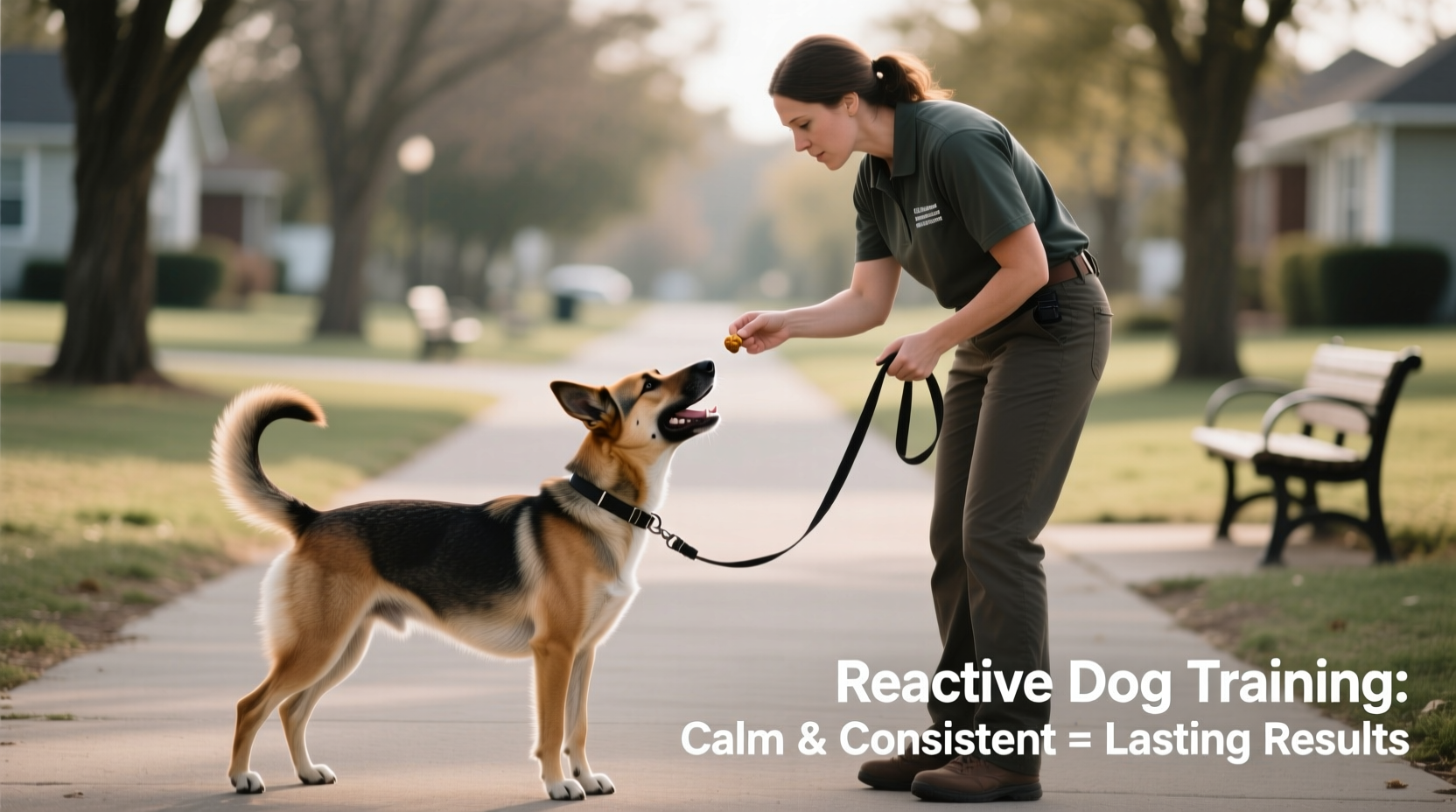Walking a reactive dog can feel like navigating a minefield. One moment you're strolling peacefully; the next, your dog is lunging, barking, or trembling at the sight of another dog, a stranger, or even a passing bicycle. Reactivity isn't aggression—it's fear, overstimulation, or lack of socialization manifesting as an exaggerated response. The good news: with patience, consistency, and the right techniques, reactivity can be managed and significantly reduced. Lasting change doesn’t come from suppression but from understanding, redirection, and rebuilding confidence.
Understanding Leash Reactivity: The Root Causes

Dog reactivity on leash stems from emotional triggers, not disobedience. When a dog feels threatened or overwhelmed, their fight-or-flight instinct kicks in. On leash, flight isn’t an option, so many dogs default to fight—barking, lunging, growling—as a way to create distance. Common causes include:
- Lack of early socialization during critical developmental windows (3–14 weeks).
- Negative past experiences, such as being attacked by another dog or startled by loud noises.
- Genetic predisposition in certain breeds more prone to vigilance or sensitivity.
- Poor leash management that inadvertently reinforces tension through jerking or yelling.
It’s essential to recognize that punishment-based corrections only deepen fear and damage trust. Effective training focuses on changing the dog’s emotional response—not just suppressing behavior.
“Reactivity is communication. Your dog isn’t misbehaving—they’re asking for help.” — Dr. Sophia Yin, Applied Animal Behaviorist
Step-by-Step Training Framework for Long-Term Success
Sustainable progress requires a structured approach. This six-phase framework builds confidence gradually while teaching self-control.
- Assess Triggers and Thresholds: Identify what sets your dog off (other dogs, bikes, hats) and at what distance they remain calm. This “threshold distance” is where training begins.
- Begin Counter-Conditioning: Use high-value treats (like boiled chicken or cheese) when a trigger appears *at a safe distance*. The goal: help your dog associate the trigger with something positive.
- Introduce Desensitization: Gradually decrease the distance to triggers as your dog stays relaxed, always working below threshold.
- Train Focus Cues: Teach reliable “look at me” or “watch” commands using consistent verbal cues and rewards.
- Incorporate Pattern Games: Practice structured maneuvers like the “about-turn” or “passing approach” to give your dog predictable responses instead of chaos.
- Generalize Skills: Slowly introduce new environments, distractions, and durations to solidify learning.
Essential Tools and Techniques That Work
Not all tools are created equal. The right equipment supports learning without causing pain or anxiety.
| Tool | Best For | Avoid If |
|---|---|---|
| Front-clip harness | Reducing pulling, increasing control | Dog has neck/spine issues (consult vet) |
| Head halter (e.g., Gentle Leader) | Redirecting head/attention gently | Dog shows signs of distress or resistance |
| Standard flat collar | Calm, trained dogs | Reactive dog prone to lunging (risk of injury) |
| No-pull harness (back-clip) | Mild pullers | Strong lunge reactions (can worsen leverage) |
Pair tools with technique. A front-clip harness is ineffective if used with force. Instead, use it to guide gentle turns when your dog starts to react, then reward disengagement.
Pattern Games: The About-Turn Method
When your dog spots a trigger, immediately turn and walk in the opposite direction. Reward heavily when your dog follows. Over time, dogs learn: “When I see something scary, turning with my person makes great things happen.” This empowers them with a clear, repeatable choice.
Real-Life Example: Transforming Max, the Fearful Border Collie
Max, a 3-year-old Border Collie, would bark and lunge at other dogs within 50 feet. His owner, Sarah, avoided walks altogether. Working with a certified trainer, they began training in a quiet parking lot. Using boiled chicken and starting at 75 feet from a calm helper dog, Max learned to look at Sarah for treats when he noticed the other dog. After two weeks of daily 10-minute sessions, Max remained calm at 40 feet. By week six, he could pass other dogs at 20 feet with only a glance. Today, Max enjoys neighborhood walks with minimal reactivity—proof that consistency and positive reinforcement yield real change.
Checklist: Daily Practices for Calming a Reactive Dog
Use this checklist to stay on track with your training plan:
- ✅ Assess your dog’s body language before each walk (tense muscles, stiff tail, whale eye).
- ✅ Choose low-distraction routes or times (early morning, quiet streets).
- ✅ Bring high-value treats and keep them accessible.
- ✅ Practice focus exercises (e.g., “watch me”) during calm moments.
- ✅ End the walk before your dog becomes overwhelmed.
- ✅ Record progress weekly (note distance, duration, reactions).
- ✅ Avoid forcing exposure—never “get closer to practice.”
Frequently Asked Questions
How long does it take to train a reactive dog?
There’s no fixed timeline. Mild cases may improve in 4–8 weeks with consistent effort. Severe reactivity can take 6–12 months or longer. Progress isn’t linear—setbacks are normal. The key is consistency, not speed.
Can I train my reactive dog without a professional?
You can make progress independently, especially with mild reactivity. However, a certified dog behavior consultant (IAABC or KPA credentialed) can identify subtle triggers, design tailored plans, and prevent mistakes that worsen reactivity. For safety and effectiveness, professional guidance is strongly recommended.
Should I let other dogs greet my reactive dog?
No. Forced greetings undermine training. Reactivity often stems from discomfort with close interactions. Allowing on-leash greetings teaches your dog that intense encounters are inevitable, increasing anxiety. Manage encounters carefully and prioritize controlled, positive experiences only.
Conclusion: Building Confidence One Step at a Time
Calming a reactive dog isn’t about quick fixes—it’s about rewiring fear into confidence. Every successful walk, every ignored trigger, every treat earned for calmness strengthens a new narrative: the world is not a threat. With empathy, structure, and science-backed methods, your dog can learn to walk beside you in peace. Celebrate small victories, stay patient, and remember: progress is measured in moments of calm, not the absence of reaction.









 浙公网安备
33010002000092号
浙公网安备
33010002000092号 浙B2-20120091-4
浙B2-20120091-4
Comments
No comments yet. Why don't you start the discussion?